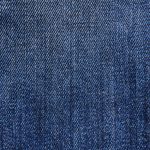Are you unsure about the quality of cotton fabric? Don’t worry, we’ve got you covered.
In this article, we’ll show you how to check the quality of cotton fabric using simple techniques. By understanding the fabric content, examining the thread count, evaluating the fabric weight, checking for color fastness, assessing the fabric texture, and inspecting the fabric dye, you’ll be able to determine whether the cotton fabric is of high quality or not.
So let’s dive in and become an expert in cotton fabric quality evaluation.
Table of Contents
Understanding the Fabric Content
Understanding the fabric content is crucial in determining the quality of cotton fabric. When it comes to cotton, the fabric construction plays a significant role in its overall durability. The way the fabric is woven or knitted can greatly affect its strength and longevity.
One important aspect to consider is the thread count of the fabric. A higher thread count generally indicates a finer and more tightly woven fabric, making it more durable. Fabrics with a lower thread count may be more prone to tearing or pilling over time.
Another factor to consider is the type of weave used in the fabric construction. Common types of cotton weaves include plain weave, twill weave, and satin weave. Each weave has its own characteristics and affects the fabric’s durability differently. For example, a plain weave is known for its strength and durability, while a satin weave is more delicate and prone to snagging.
It is also important to consider any additional treatments or finishes applied to the fabric. Some fabrics are treated with chemicals to enhance their durability or to make them more resistant to wrinkling or staining. However, these treatments can sometimes affect the fabric’s feel and breathability.
Examining the Thread Count
When it comes to choosing the right bedding, understanding the thread count is essential. The thread count refers to the number of threads woven into one square inch of fabric and can greatly impact the quality and feel of your sheets.
Factors such as the type of fabric and the weaving technique used can affect the thread count, so it’s important to consider these factors when selecting the ideal thread count range for your bedding.
Importance of Thread Count
To ensure the quality of the cotton fabric you’re considering, you should check the thread count. The thread count refers to the number of threads woven into one square inch of fabric. It is an important factor that determines the fabric’s durability, softness, and overall quality. A higher thread count generally indicates a finer, smoother fabric. However, it’s not just the thread count that matters. The ply count and thread quality also play a significant role. Ply count refers to the number of yarns twisted together to create a single thread. Higher ply count can enhance the fabric’s strength and durability. Moreover, the quality of the thread used in the fabric can impact its longevity and appearance. Inferior quality threads may break or fray easily, leading to a shorter lifespan of the fabric. Therefore, when examining the thread count, it is crucial to consider both the ply count and thread quality for a better understanding of the fabric’s overall quality.
| Thread Count | Ply Count | Thread Quality |
|---|---|---|
| Higher | Higher | High |
| Lower | Lower | Low |
| Higher | Lower | Variable |
Factors Affecting Thread Count
The factors that affect thread count include the ply count and thread quality. When it comes to durability, these factors play a crucial role in determining the strength and longevity of the fabric.
Ply count refers to the number of yarns twisted together to form a single thread. Higher ply count generally results in a higher thread count, which in turn contributes to increased durability.
However, thread quality also plays a significant role in determining the overall durability of the fabric. Poor thread quality can lead to weaker seams and a higher likelihood of tears or unraveling.
Therefore, it is important to consider both the ply count and thread quality when assessing the durability of a cotton fabric.
Ideal Thread Count Range
A higher thread count generally results in increased durability, but it’s important to consider the ideal range for optimal comfort. When it comes to thread count guidelines, industry standards recommend a range of 200 to 800 threads per square inch.
Here’s why you should pay attention to this range:
-
Optimal breathability: A thread count in the ideal range allows for better airflow, keeping you cool and comfortable throughout the night.
-
Softness and smoothness: Higher thread counts tend to offer a softer and smoother feel against your skin.
-
Durability: While a higher thread count can enhance durability, going too high may sacrifice strength and longevity.
-
Cost-effectiveness: Staying within the recommended thread count range ensures you get the best value for your money.
-
Easy maintenance: Sheets with an ideal thread count range are easier to care for and maintain their quality over time.
Evaluating the Fabric Weight
You can determine fabric weight by feeling the thickness of the cotton fabric. Evaluating the fabric weight is an important factor in determining the quality of cotton fabric. The weight of the fabric affects its durability and how it will drape and hang when made into clothing or other items. To help you understand the fabric weight better, here is a table that shows the different fabric weights commonly found in cotton fabrics:
| Fabric Weight | Description | Common Uses |
|---|---|---|
| Lightweight | Thin and light | Summer clothing, linings |
| Mediumweight | Moderate thickness | Shirts, dresses, curtains |
| Heavyweight | Thick and heavy | Jackets, upholstery, blankets |
Checking for Color Fastness
When it comes to checking for color fastness, there are a few key points to keep in mind.
First, look for color fading indicators, such as bleeding or transfer of dye onto other fabrics.
Second, familiarize yourself with the testing methods available, such as colorfastness to washing or rubbing.
Finally, understand the importance of color fastness, as it ensures that the fabric retains its original color and does not fade or change over time.
Color Fading Indicators
Check for color fading indicators by examining the fabric closely. Look for any signs of discoloration or fading, such as areas that appear lighter than the rest of the fabric. Pay attention to any unevenness in color, as this could be a sign of poor color retention.
Additionally, check for any color transfer when rubbing the fabric against a white cloth. If the color transfers easily, it could indicate that the fabric is not colorfast and may fade over time.
To prevent color fading and maintain fabric color retention, it is important to follow proper care instructions, such as washing the fabric in cold water and avoiding prolonged exposure to sunlight.
Testing Methods Available
There are various testing methods available to determine the colorfastness and quality of cotton fabric. These testing techniques are essential to ensure that the fabric meets the required quality standards. Here is a table outlining some of the commonly used testing methods:
| Testing Method | Purpose | Equipment Used |
|---|---|---|
| Colorfastness Testing | Determines the fabric’s color stability | Spectrophotometer |
| Strength Testing | Measures the fabric’s strength and durability | Tensile testing machine |
| Pilling Resistance Testing | Determines the fabric’s resistance to pilling | Martindale abrasion tester |
These testing methods provide valuable insights into the quality of cotton fabric. By conducting these tests, manufacturers can ensure that the fabric meets the necessary standards and will perform well over time. It is crucial to prioritize quality testing to ensure that the cotton fabric used in various products is of high quality and meets customer expectations.
Importance of Color Fastness
To ensure your cotton products maintain their color over time, it’s important to prioritize color fastness testing. Color fastness refers to the ability of a fabric to retain its color and resist fading.
This testing is crucial because cotton, although a popular choice for its comfort and breathability, is prone to color fading. By subjecting the fabric to various conditions such as washing, light exposure, and rubbing, color fastness testing can accurately assess the fabric’s ability to retain its color. This helps manufacturers determine the durability and quality of the cotton fabric.
Assessing the Fabric Texture
Feel the fabric texture to determine its quality. When evaluating the fabric softness, run your fingers over the surface of the fabric. A high-quality cotton fabric should feel smooth and luxurious to the touch. It should have a soft and comfortable texture that is gentle against the skin. On the other hand, a low-quality fabric may feel rough, scratchy, or uneven.
To check for fabric durability, pay attention to the thickness and density of the fabric. A durable cotton fabric will have a tight weave and be less prone to tearing or fraying. It should also have a good weight to it, indicating that it is made from high-quality fibers.
When assessing the fabric texture, keep the following points in mind:
-
Fabric Softness:
-
Smooth and luxurious feel
-
Soft and comfortable texture
-
Fabric Durability:
-
Tight weave
-
Good weight
By evaluating these factors, you can ensure that you are choosing a high-quality cotton fabric that will last and provide the desired level of comfort.
Inspecting the Fabric Dye
Inspecting the fabric dye is important to ensure the color is even and vibrant throughout the fabric. Fabric dye analysis and fabric dye testing are crucial steps in determining the quality of the dye used on cotton fabric. By conducting these tests, you can determine if the dye has been applied evenly and if the color is resistant to fading or bleeding.
One method of fabric dye analysis is the colorfastness test. This test involves exposing the fabric to various conditions, such as washing, light exposure, and rubbing, to assess how well the dye holds up. By subjecting the fabric to these conditions, you can determine if the dye is of good quality and will maintain its color over time.
Another important aspect of fabric dye inspection is checking for any inconsistencies in color. This can be done by visually examining the fabric under different lighting conditions. By doing so, you can identify any areas that may have been unevenly dyed or where the dye may have been applied too lightly or too heavily.
Conclusion
In conclusion, checking the quality of cotton fabric is essential to ensure you’re getting a durable and long-lasting product.
By understanding the fabric content, examining the thread count, and evaluating the fabric weight, you can make an informed decision about the fabric’s quality.
Checking for color fastness, assessing the fabric texture, and inspecting the fabric dye are also important steps in determining the fabric’s quality.
Conducting these checks will help you select high-quality cotton fabric that meets your needs and expectations.
Remember to always take the time to thoroughly assess the fabric before making a purchase.
- Tetron Fabric for Marine Applications: Durability and Use Cases - June 18, 2025
- Tetron Fabric for Outdoor Furniture: Weather Resistance and Care - June 18, 2025
- Tetron Fabric for Wall Coverings: Style and Application Tips - June 18, 2025



